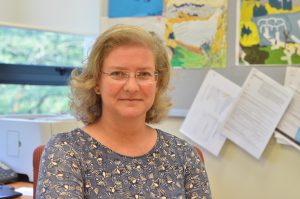Raising Bilingual and Biliteracy Proficiency in Young Children
Bilingualism is commonly known as the ability to utilize two languages to communicate in various settings. In Singapore, the aim of the bilingual policy is for students to learn English in addition to an official Mother Tongue Language to their highest potential, where the latter serves to strengthen an individual’s values and sense of cultural belonging. However, there seems to be a gap in our understanding of how well children of different age groups are able to learn both languages simultaneously as well as the different interventions that can further support bilingual learning. Dr Beth O’Brien, Head of Early and Middle Childhood Research at the Centre for Research in Child Development and Principal Research Scientist at the Office of Education Research, shares with us her project that seeks to answer these questions.

An Overview of Singapore’s Bilingual Situation
Previous studies on the state of bilingualism in Singapore have indicated that children’s proficiency in Mother Tongue language (MTL) lags in comparison to their development in English language (EL). “This is likely related to the curriculum time and high stakes testing in English in schools, for which parents may emphasize early English input,” Dr Beth O’Brien explains.
She is also concerned about children’s motivation to learn MTL. “In Singapore, respective MTL is only used in MTL classes for primary and secondary school curriculum. Institutes of higher learning mostly offer courses done entirely in English, which could be another reason why students are unmotivated to learn MTL,” she adds.
She acknowledges that there is a paucity of research on local children’s bilingual development. In Singapore, unlike in many other societies, a child’s MTL may be more of a “heritage” language, and not the first language he/she acquires through the home. “It is therefore difficult to make comparisons across countries such as Japan, South Korea, or even Finland about Mother Tongue use in classrooms for other subjects, because the definition of ‘Mother Tongue’ differs across the contexts,” she remarks.
Even though there are several longitudinal studies in Singapore which examine children’s growth in two languages, they are mostly focused on broader sets of skills. To address the research gaps, Beth and her team started their own longitudinal study called “GIBBER” in 2021.
Plugging the Gap in Bilingual Research
The GIBBER project, short for Growth in Bilingual & Biliteracy Proficiency: Environmental, Individual & Experiential Factors, has three primary aims. Firstly, it aims to capture the developmental trajectories of Singaporean children’s EL and MTL proficiency from Kindergarten 1 to Primary 4. “The GiBBer project is the first large-scale longitudinal study to comprehensively measure subsets of language and literacy skills in both English and each of the MTLs,” Beth shares.
The findings will provide a set of benchmarks for EL and MTL proficiency for the different age groups, along with a set of measurement tools that may be useful for tracking child progress. “These could be useful for practitioners (e.g., teachers and educators) as well as researchers in the field of child language development,” she adds.
The second aim seeks to identify individual differences that can account for the variability observed in children’s bilingual development. The findings will contribute to how individual learners differ in their language development and may contribute to future screeners for at-risk learners.
The third and final aim, says Beth, is to evaluate what interventions are effective to support Singaporean children’s bilingual development. “The findings will inform about the types of interventions that may support children’s early language and literacy development,” she says.
The Future of Mother Tongue Learning
“It is important to note that the bilingual learning process is long and gradual – sometimes even a lifelong process – so have patience”
– Beth’s advice for parents and educators
The research project is currently on-going, with data collection set to continue through the end of 2024. Looking ahead, Beth has some ideas on how the future of MTL learning could look like.
“Potentially, learning about familiar concepts in a new language could be introduced, or a translanguaging approach could be used (where either or both languages are acceptable) in subject courses,” Beth mentions. Translanguaging can be used as a pedagogical strategy, for example, when teaching challenging content like Science, allowing students to use their full repertoire of languages. This is because using just one language requires suppressing the other, which involves a cognitive load, whereas using any available language will free cognitive attention to the content.
Outside of school, bilingual development in MTLs could be further supported by engaging students with books, literature, language learning apps (e.g., Duolingo, Babbel), music, movies, or other facets of popular culture, that uses their respective MTs.
“It is important to note that the bilingual learning process is long and gradual – sometimes even a lifelong process – so have patience,” Beth says. “Different approaches may also work for different stages during a child’s development, hence parents and educators should consider the child’s needs and learning style, and find the most effective formula that works.”






